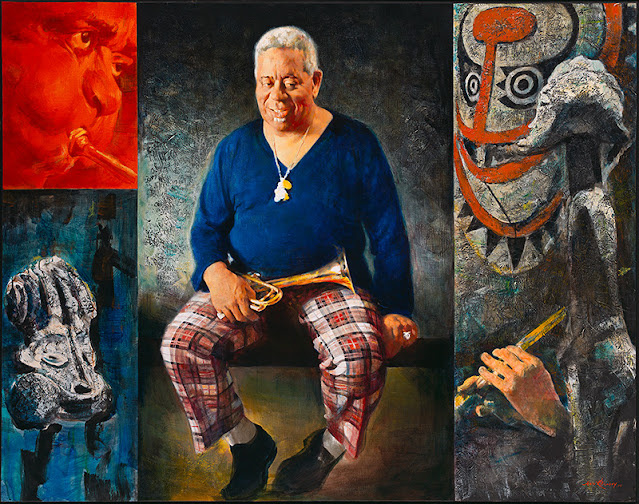I blame the 24/7 news cycle. You just can't get in the proper musing fashion with your ex-president vigorously manifesting himself as a traitor, continually ramping up to tear the country apart violently to return himself to undeserved high office.
But you can try.
I watched Serena Williams play in the U.S. Open — my wife is a tennis fan. And while it was thrilling and dramatic, one small aspects of her monumental success kept tripping me up.
I watched Serena Williams play in the U.S. Open — my wife is a tennis fan. And while it was thrilling and dramatic, one small aspects of her monumental success kept tripping me up.
Just look at it.
She's the goat. And not because Williams lost her bid for a 24th major title. Everyone was intensely gratified by how well she played, at 40, against opponents who sometimes weren't yet born when she began her professional career.
No, Williams is the GOAT because that stands for "Greatest of All Time."
You know that. I know that.
And yet. It just doesn't feel right.
She's the goat. And not because Williams lost her bid for a 24th major title. Everyone was intensely gratified by how well she played, at 40, against opponents who sometimes weren't yet born when she began her professional career.
No, Williams is the GOAT because that stands for "Greatest of All Time."
You know that. I know that.
And yet. It just doesn't feel right.
To me.
Decades of habit cannot be abandoned in a moment. Up until fairly recently, a goat, in sports, was someone who failed in spectacular fashion. Boston Red Sox first baseman Bill Buckner was perhaps the archetypical goat for letting Mookie Wilson's grounder go between his legs in the sixth game of the World Series. Charlie Brown was a goat.
The new meaning, "Greatest Of All Time," starts with Muhammad Ali, who used the term to refer to himself. It was abbreviated by LL Cool J, who put out an album, "G.O.A.T.," in 2000.
Decades of habit cannot be abandoned in a moment. Up until fairly recently, a goat, in sports, was someone who failed in spectacular fashion. Boston Red Sox first baseman Bill Buckner was perhaps the archetypical goat for letting Mookie Wilson's grounder go between his legs in the sixth game of the World Series. Charlie Brown was a goat.
(Note that, in this strip, Charlie despairs at being "the goat," which strikes me as unusual, since the definite article seems more used in the greatest sense. Blow a play and you risk becoming a goat, part of a braying herd. Rise to the summit and you achieve the rare distinction of becoming the GOAT.)
Yes, I'm always the one, when some other old coots complain about changes in the language, who points out that language is supposed to be plastic. That's something of an in-joke, as plastic today refers to the artificial substance, while previously it evoked the ability to be formed, taken from the Greek word plastikos, to mold or sculpt (hence "plastic surgery.")
Goat as a metaphorical term, and not just a barnyard animal, is traced all the way back to 1530, when William Tyndale translated the Bible from Hebrew and offered up "And Aaron cast lottes outer the gootes; one lotte for the Lorde, and another or a scape-goote."
Hence "scapegoat," or animal upon which the people of Israel's sins were imposed upon, came into the language. "Scape" was coined in the 1300s as a shortened term to describe the act of escaping. Thus a "scapegoat" is literally an escaped goat, as opposed to the one that gets its throat cut.
 |
| Metropolitan Museum |
This was all sorted out a couple years back by Sports Illustrated and others. I'm late to the party, I know.
I wonder. Will the Charlie Brown sense be effaced by the Serena sense? I could say I hope not, because the Bill Buckner goat is such a useful term. What would its replacement be? A ... what? Loser? Clod? Blunderer? Nothing comes close. While GOAT, as in Greatest Of All Time, still has a whiff of the barnyard. At least to me, though that has to be my age, since few seem hesitant. "The most fierce GOAT = Serena Williams," former presidential press secretary Jen Psaki tweeted this week. The language changes, and time reminds us of the fact. When the Hindenburg zeppelin blew up at Lakehurst, New Jersey, in 1937, Herb Morrison, broadcasting its arrival on WLS, described the disaster as "terrific," meaning "full of terror." It isn't terrific anymore.












